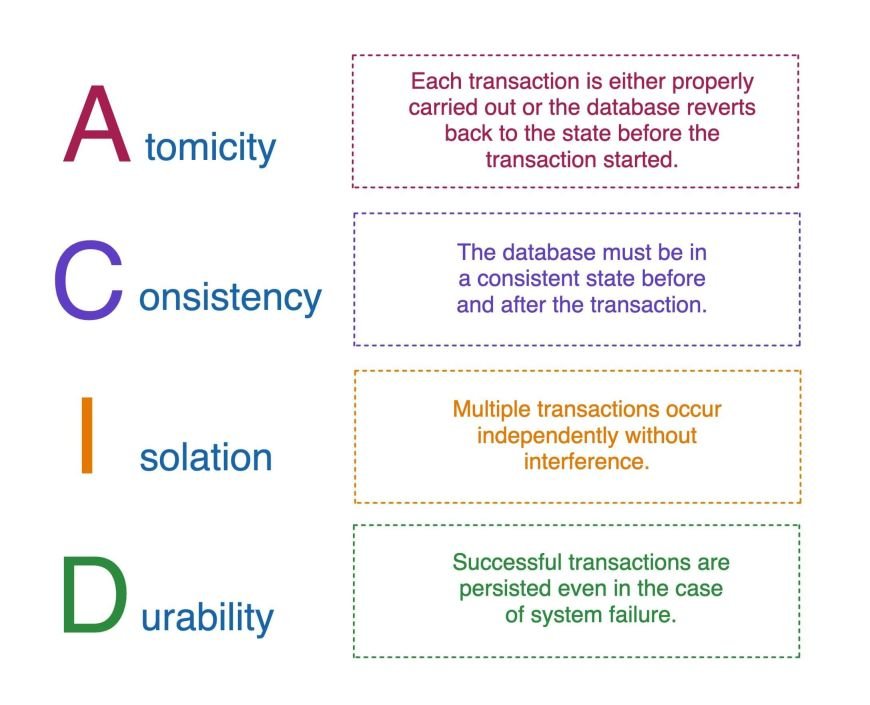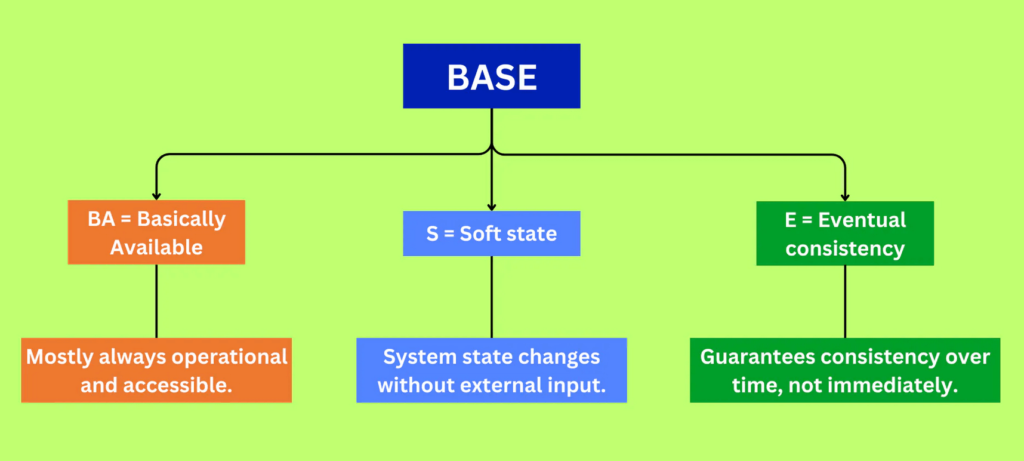ACID vs BASE Properties
In this tutorial, we are going to discuss about ACID vs BASE Properties. ACID and BASE are two sets of properties that represent different approaches to handling transactions in database systems. They reflect trade-offs between consistency, availability, and partition tolerance, especially in distributed databases.
ACID Properties
- Definition: ACID stands for Atomicity, Consistency, Isolation, and Durability. It’s a set of properties that guarantee reliable processing of database transactions.
- Components:
- Atomicity: Ensures that a transaction is either fully completed or not executed at all.
- Consistency: Guarantees that a transaction brings the database from one valid state to another.
- Isolation: Ensures that concurrent transactions do not interfere with each other.
- Durability: Once a transaction is committed, it remains so, even in the event of a system failure.
- Example: Consider a bank transfer from one account to another. The transfer operation (debit from one account and credit to another) must be atomic, maintain the consistency of total funds, be isolated from other transactions, and changes must be permanent.
- Use Cases: Ideal for systems requiring high reliability and data integrity, like banking or financial systems.

BASE Properties
- Definition: BASE stands for Basically Available, Soft state, and Eventual consistency. It’s an alternative to ACID in distributed systems, favoring availability over consistency.
- Components:
- Basically Available: Guarantees availability, meaning that the system should always respond to queries, even if it can’t provide the most recent data or the data may be inconsistent.
- Soft State: The state of the system may change over time, even without input. This reflects the idea that the data doesn’t need to be in a consistent state at all times.
- Eventual Consistency: The system will eventually become consistent once it stops receiving input. This means that given enough time without any changes, all replicas of data will eventually converge to a consistent state.
- Example: A social media platform using a BASE model may show different users different counts of likes on a post for a short period but eventually, all users will see the correct count.
- Use Cases: Suitable for distributed systems where availability and partition tolerance are more critical than immediate consistency, like social networks or e-commerce product catalogs.

Key Differences
- Consistency and Availability: ACID prioritizes consistency and reliability of each transaction, while BASE prioritizes system availability and partition tolerance, allowing for some level of data inconsistency.
- System Design: ACID is generally used in traditional relational databases, while BASE is often associated with NoSQL and distributed databases.
- Use Case Alignment: ACID is well-suited for applications requiring strong data integrity, whereas BASE is better for large-scale applications needing high availability and scalability.
Conclusion
ACID is critical for systems where transactions must be reliable and consistent, while BASE is beneficial in environments where high availability and scalability are necessary, and some degree of data inconsistency is acceptable.
In summary, ACID properties emphasize strong consistency and reliability, making them suitable for traditional relational database systems. On the other hand, BASE properties relax consistency to achieve better availability and scalability, which is often preferred in distributed systems and NoSQL databases, where high availability and partition tolerance are crucial.
That’s all about the ACID vs BASE Properties. If you have any queries or feedback, please write us email at contact@waytoeasylearn.com. Enjoy learning, Enjoy system design..!!